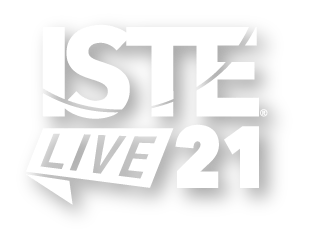

Math Music Videos: How to Make Fun and Effective Math Songs |
Listen and learn : Snapshot
Snapshots are a pairing of two 20 minute presentations followed by a 5 minute Q & A.
This is presentation 1 of 2, scroll down to see more details.
Other presentations in this group:
| Audience: | Coaches, Teachers, Teacher education/higher ed faculty |
| Skill level: | Beginner |
| Attendee devices: | Devices not needed |
| Topic: | Innovation in early childhood/elementary |
| Grade level: | PK-5 |
| Subject area: | Math, Music |
| ISTE Standards: | For Coaches: Visionary Leadership
Designer
|
This series of math music videos arise out of a void in the education arena in terms of entertaining and educational content for advanced math concepts. Pioneers like School of Rock and Flocabulary have made amazing music based educational videos, but usually fall short of producing content for middle and high school level mathematics. Content creators and teachers that have ventured into this arena thus far have done so with low grade music production quality. I chose to enter the math music education world so that I could build high quality songs and videos that prepared students for the most commonly tested concepts on the SAT and ACT.
As is the case with online video content, these songs are available on demand. Moreover, students have the benefit of being able to pause and replay, allowing for effective processing across various learning styles. Because of the inherent flexibility of this medium coupled with the fact that content is being delivered visually and musically, students have been able to achieve excellent academic results.
My solution is delivered via YouTube for free consumption at https://www.youtube.com/playlist?list=PLZBnAG03572rOEs6CIAnVXWuwfMHM2F-X.
Each song focuses on a different topic. The concepts currently covered are as follows: (1) The Quadratic Formula; (2) SOHCAHTOA (trigonometry); (3) Pi; (4) Special Right Triangles; (5) Mean, Median, and Mode; (6) Permutations and Combinations, (7) Compound Interest; (8) Distance, Rate, and Time; (9) Slope Intercept Form, (10) PEMDAS (Order of Operations); (11) Circles on the Coordinate Plane; (12) Long Division; (13) Systems of Linear Equations; (14) Exponents; (15) Imaginary Numbers; (16) Sequences; and (17) Solving Quadratics. The videos paired with the songs provide enough concrete content to teach the fundamental components of each concept, and the lyrics of the chorus often help students memorize lengthy formulas or properties. For example, the Quadratic Formula song has garnered a particularly positive reaction thus far both in terms of views (200,000+) and press. I believe that it has been received well because it both conveys the basic facts of quadratic equations while delivering the lengthy quadratic formula in a musical format that makes it very easy to memorize.
The math music videos are core components of my SAT Math Video Course sold on Udemy, entitled Power 800 SAT Math. To date, my course is the top selling SAT Math video course on the platform, with over 1,900 students enrolled. Moreover, my math music videos have generated nearly half a million views on YouTube, an indicative achievement considering that my YouTube channel has only 2,000 subscribers. These figures in combination with anecdotal evidence from students along with press exposure received thus far for my music videos (on BuzzFeed, The Journal, EdTech Digest, and an invitation from the National Museum of Math to perform one of my songs) leads to the likely conclusion that these works are indeed superior to existing math music videos in terms of both entertainment value as well as educational merit.
The presentation will begin with an overview of my experience planning and developing math music videos. I will then share clips of various math music videos from my YouTube channel that have resonated particularly well with audiences. I will then explain how teachers can create their own math music videos with minimal technical expertise. The key questions that will be answered are as follows: 1) how to write and record music, 2) how to plan a video shoot, 3) how to edit using Final Cut, and 4) how to cover concepts effectively in a song. Time will be allocated in the following manner: 10 minutes of introductory material including sample songs from my channel, 3 minutes showing press clips explaining the potency of the pedagogy, and the remaining 47 minutes teaching the technical aspects of building math music videos.
The math music videos are core components of my SAT Math Video Course sold on Udemy, entitled Power 800 SAT Math. To date, my course is the top selling SAT Math video course on the platform, with over 3,000 students enrolled. Moreover, my math music videos have generated nearly half a million views on YouTube, an indicative achievement considering that my YouTube channel has only 21,000+ subscribers. These figures in combination with anecdotal evidence from students along with press exposure received thus far for my music videos (on BuzzFeed, The Journal, EdTech Digest, and an invitation from the National Museum of Math to perform one of my songs) leads to the likely conclusion that these works are indeed superior to existing math music videos in terms of both entertainment value as well as educational merit.
https://mrelementarymath.com/teach-with-math-songs/
https://study.com/blog/how-i-combined-music-and-mathematics-in-my-elementary-classroom.html
